
Aside from karate, kung fu, and taekwondo, few people know other types of martial arts. In fact, there are so many different types of martial arts today with each of them having a distinct fighting style. Some people, however, may not even fully understand what martial arts is. Read on to find out the moves and benefits each one entails!
What is martial arts?
Martial art is a kind of sport that deals with attacking and defending. In other words, martial arts are all about combat. There are some types of martial arts that use weapons, though, but most martial arts deal with hand-to-hand combat.
Now, how many types of martial arts are there? Today, there are over 170 types. And you can expect this number to grow in the future as more professionals are developing styles.
Martial arts require a lot of self-discipline. While it is difficult to learn martial arts forms and it usually takes people years to master them, it is all worth it. How do we say so? Well, for starters, martial arts enhance your coordination and flexibility. They are also full-body workouts. Aside from boosting your physical health, they could also improve mental health and equip you with decent self-defense skills.
If you’re interested to learn, below is a list of martial arts to know which one is the best for you!
Aikido
Year created: 1940s
Country of origin: Japan
Creator: Morihei Ueshiba
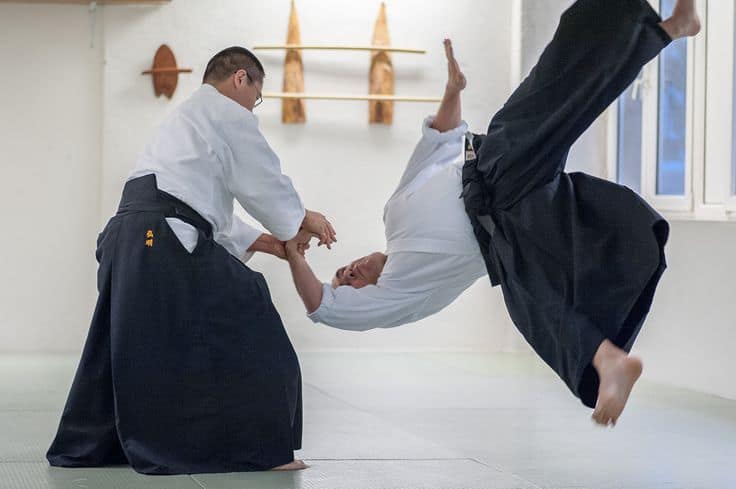
All over the world, people practice different styles of Japanese martial arts. One example is Aikido. Martial artists refer to aikido as “the way of unifying (with) life energy” or “the way of harmonious spirit”.
The creator, Ueshiba, also called “O-Sensei,” combined Indian and Chinese beliefs with his martial arts knowledge. Thus, aikido deals with mental, spiritual, and physical training.
Aikido focuses on throwing, striking, and pinning your opponent. Grappling and joint-locking are also prevalent. At times, weapons are used such as Japanese swords, staffs, and knives.
American Kenpo Karate
Year created: 1950s
Country of origin: United States
Creator: Ed Parker
Many types of martial arts are products of martial artists mixing a type of martial art with their own beliefs or practices. American Kenpo Karate is an example of this. Ed Parker mixed traditional karate with modern styles of street fighting.
American Kenpo Karate focuses on hand-to-hand combat and self-defense tactics. Reaction time is an important factor in American Kenpo. You must respond quickly to attacks.
In American Kenpo, “shifting” refers to the fast transition between forms. Some examples of these forms are Short Form 1, Short Form 2, Long Form 2, and so on.
Arnis
Year created: 1500s
Country of origin: Philippines
Creator: N/A

Unlike other types of martial arts, the Arnis does not have a sole creator. During the 1500s, the indigenous people of the Philippines defended themselves and their lands with different weapons, such as spears, swords, and sticks. From this history, Arnis was developed.
Arnis is the Philippines’ national sport and martial arts. These weapons used in it are wooden sticks or daggers. While Arnis heavily focuses on weapon-based fighting, hand-to-hand combat is still important. Grappling and weapon disarming are some of the techniques you’ll learn in Arnis.
Other names for Arnis include “Kali” or “Eskrima.” Those who practice the sport are either called “arnisador” or “arnisadora.”
Boxing
Year created: 688 B.C.
Country of origin: Ancient Greece
Creator: N/A

Out of all the types of martial arts, boxing might be the most popular. Boxing is an Olympic sport that many look forward to every year.
Western boxing, or simply “boxing,” is a combat sport that only uses punches. In a boxing ring, two opponents will throw punches at one another during three-minute rounds. A referee inside the ring will oversee the match to ensure that no fouls occur.
The original creator of boxing is unknown. Its origins can be traced back to Ancient Greece, where it was part of the ancient Olympic Games.
Brazilian Jiu-Jitsu
Year created: 1920
Country of origin: Brazil
Creator: Carlos Gracie, Oswaldo Gracie, Gastao Grace Jr., George Gracie, and Helio Gracie

Brazilian Jiu-Jitsu is one example of the types of martial arts that focus on ground fighting. This means that martial artists of this type focus on tackling their opponent to the ground. Whoever makes their opponent submit will win the match.
While this martial art requires you to take down your opponents, many view this as a non-violent sport. In Brazilian Jiu-Jitsu, martial artists have to master the angles, pressure, timing, and leverage when tackling opponents to the ground. Applying these principles ensures opponents do not harm or commit fouls against each other.
With these principles, even smaller people can defeat the biggest of opponents. In fact, Brazilian Jiu-Jitsu is known as a “gentle art”.
Capoeira
Year created: 1500s
Country of origin: Brazil
Creator: N/A

Some types of martial arts combine fighting styles with acrobatics. Capoeira, for instance, combines dance and martial arts together. Enslaved Africans in Brazil were the first to practice this martial art.
A “capoeirista” refers to a person who practices capoeira, and one must be flexible and agile. This is because capoeira involves a lot of complex movements. Handstands and somersaults are common moves in this martial art. Sometimes, capoeiristas strap blades to their ankles or held them in between their toes.
Music is an important part of capoeira. In a match, two capoeiristas will try to strike at one another while timing their moves with the music. Both singing and instrumentals accompany capoeiristas as they face off.
Fencing
Year created: 1850s
Place of origin: London
Creator: Domenico Angelo

When someone mentions fencing, you’re probably thinking of two people in white suits trying to poke one another with pointy swords. This isn’t a far-off description of the martial art itself.
Fencing is one of the most popular types of martial arts in the world and is one of the most awaited sports in the Olympics. Fencers refer to those who practice this sport and there are three types of weapons they use: foil, saber, and epeé. They also wear a special jacket or strap body cards around their bodies. To score, they need to hit specific spots on their opponent’s jacket using their weapon of choice.
Hapkido
Year created: 1900s
Country of origin: Korea
Creator: Choi Yong-Sool and students
Like most types of martial arts, hapkido is another hybrid martial art. Hapkido is a martial art that focuses on self-defense tactics. Thus, a lot of grappling and throwing are involved. It is like aikido, however, martial artists use more offensive tactics in this one.
In hapkido, working on your footwork and identifying pressure points are necessary. Weapons-based combat is also a part of it, with traditional weapons such as nunchucks and sticks of different lengths.
In English, “hapkido” translates to “way of coordinated energy”. Thus, hapkido classes will often start with breathing exercises and meditation. This is to center the student’s “ki” or “energy”.
Gatka
Year created: 1400s or 1900s
Country of origin: Northern India
Creator: Sikhs

Gatka is a Sikh martial art that uses wooden sticks or swords in combat. Like other types of martial arts, it greatly developed over the years. Its origin is uncertain but some say that it was created in the 1900s while others argue that it’s already around the 15th century. Today, gatka is often performed in festivals as a sword dance or performance.
A “guru” refers to someone who teaches gatka and how to wield different kinds of gatka weapons. An example of these weapons is the “soti”, a 1-meter-long bamboo sword with a handguard. They also teach them how to sharpen their mental and spiritual senses.
The World Gatka Federation is the governing body of gatka. They forward efforts to promote the sport to people around the world.
Greco-Roman Wrestling
Year created: 1800s
Country of origin: France
Creator: Varying Accounts

Not all types of martial arts are part of the Olympics. However, Greco-Roman wrestling has been an Olympic sport since 1896. This martial art took inspiration from Ancient Greek and Roman styles of wrestling.
During a match, wrestlers cannot use footwork to sweep or tackle their opponents. In fact, they can only strike with their hands above the waist. Any hits below the waist will incur a penalty. Thus, wrestlers heavily rely on the power of their throws. It is a martial art that requires great strength.
Other names for Greco-Roman wrestling include classic wrestling, French wrestling, and flat hand wrestling.
Iaido
Year created: 1550s
Country of origin: Japan
Creator: Hayashizaki Minamoto Jinsuke Shigenobu
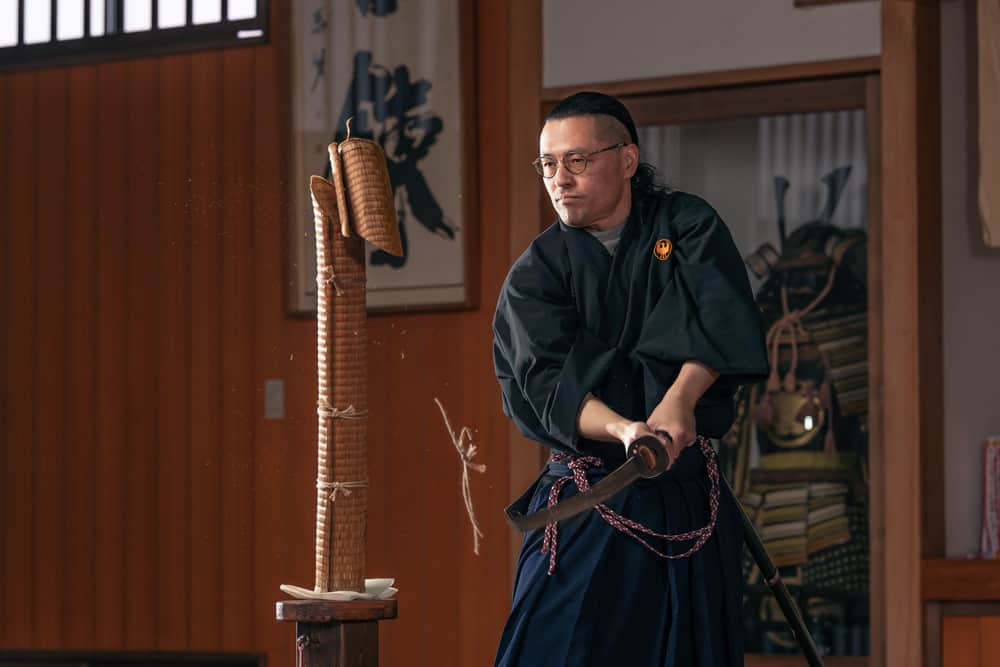
Another example of Japanese martial arts is iaido. Unlike other types of martial arts, iaido does not require an opponent. In fact, iaido is usually a solo sport, where the practitioner simply imagines their opponent.
During feudal Japan, samurais primarily used iaido. This martial art requires sharp senses and a fast reaction time. An “iaidoka” refers to someone who practices it.
The iaidoka has to be completely aware of their surroundings. They must draw their sword from its scabbard in a controlled manner, strike their opponent, remove the blood from their blade, and sheath their sword back into the scabbard. While performing these four steps, they also must be graceful and quick.
Jeet Kune Do
Year created: 1967
Country of origin: China
Creator: Bruce Lee

If you’re a fan of martial arts movies, then you probably know Bruce Lee. Not only is Bruce Lee a famous action movie star, but he is also the creator of Jeet Kune Do. As he found most types of martial arts restrictive, Lee developed his own style.
Jeet Kune Do focuses on practical fighting over perfect forms. Lee established three basic principles: simplicity, directness, and freedom. This is to ensure that the martial artist is efficient.
In English, “Jeet Kune Do” translates to “way of intercepting the fist”. This is in line with Lee’s own philosophies. To Lee, it was important to move naturally. “Fighting without fighting” was one of the key beliefs.
Jujutsu
Year created: 1600s
Country of origin: Japan
Creator: N/A
Jujutsu is a popular Japanese martial art. In fact, it paved the way for many other types of martial arts. This includes Brazilian jiu-jitsu, aikido, judo, and many more.
In English, “jujitsu” translates to “gentle art.” However, despite the name, jujutsu is one of the deadliest martial arts ever. Originally, it was a style that samurais used in combat. Jujutsu uses fighting styles that involve hitting, kicking, and throwing your opponents. Choking and kneeing are also allowed.
Other names for jujutsu are ju-jitsu or jiu-jitsu.
Judo
Year created: 1882
Country of origin: Japan
Creator: Jigoro Kano

One of the most popular types of martial arts is judo. This modern martial art draws from the styles of jujutsu, and those who practice this modern martial art are called “judoka”. The judoka wear “judogi”, a uniform specifically for judo.
As a full-contact sport, judo deals with a lot of joint locking or chokeholds. This martial art’s focus is grappling. In competitive judo, the judoka’s aim is to tackle their opponent to the ground and make them surrender.
Judo is part of the Olympic Games with the first Olympic competition for men’s judo held in Tokyo in 1964. Women judoka competed in the Olympics from 1992 onwards.
Kajukenbo
Year created: 1947
Country of origin: Hawaii Territory
Creator: Peter Choo, Frank Ordonez, Joe Holck, Clarence Chang, and Adriano D. Emperado

Kajukenbo is a relatively new martial art that originated in Hawaii in 1947. It is another example of a hybrid martial art and its name comes from the combination of the different types of martial arts it is derived from. The first syllables of karate, judo or jujutsu, and Kenpo make “ka-ju-ken”. Lastly, “bo” is from boxing. Together, it becomes “ka-ju-ken-bo”.
It combines kicks from Tang Soo do, throwing from judo, and joint locks from jujutsu. Self-defense tactics such as disarming someone are also a practice in this sport.
Karate
Year created: 1600s
Country of origin: East Asia
Creator: N/A

Out of all the types of martial arts, karate might be the most popular. Karate, or Karate Do, is a Japanese martial art that did not fully develop until the 1900s. However, its origins trace back to East Asia during the 17th century.
The word “karate” comes from “kara”, which means empty, and “te” which means hand. Thus, “karate” literally translates to “empty hand”. Just as the name suggests, karate focuses on hand-to-hand combat. There are no weapons used in this martial art. Instead, karate moves focus on kicking, striking, and blocking.
There are different types of karate. In Japan, these are the Shotokan, Goju-ryu, Shito-ryu, and Wado-ryu.
Kendo
Year created: 1800s
Country of origin: Japan
Creator: N/A
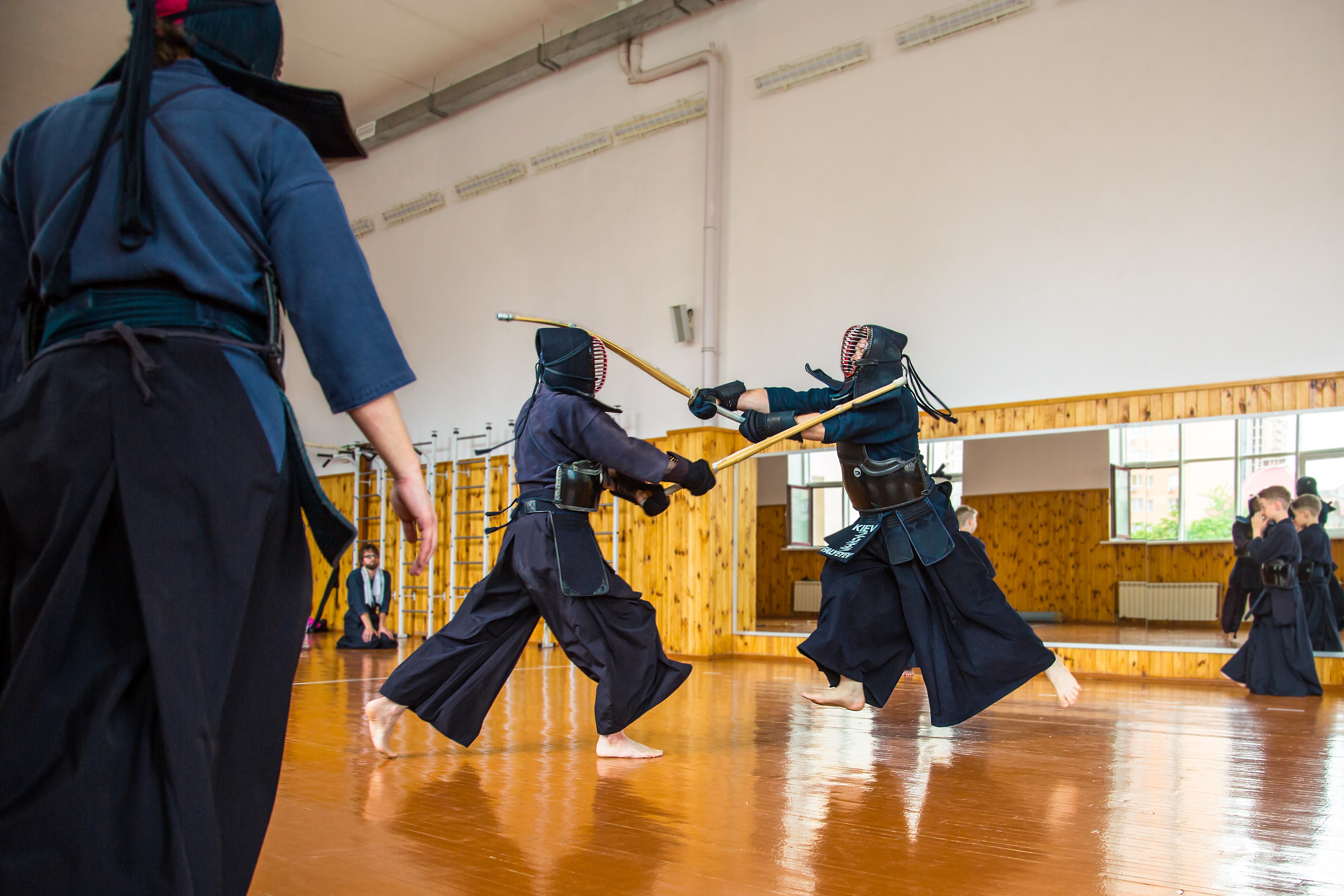
Many types of martial arts use swords in combat. Kendo is another example. The word “kendo” translates to “way of the sword”. This traditional Japanese martial art requires the mastery of a shinai. A shinai is a two-handed wooden sword that is usually made of bamboo.
Along with the shinai, the martial artist must also wear traditional armor. This armor comprises a jacket, a long divided skirt, chest armor, a waist protector, a thick mask, and padded gloves. These protect the combatant during a match.
In kendo, the goal is to strike your opponent using the shinai. However, you can only strike your opponent at specific body parts. Some examples are the top of the head and the sides of the body. Each part will have corresponding scores.
Kenjutsu
Year created: 1400s–1500s
Country of origin: Japan
Creator: N/A
Kenjutsu is another type of martial art that focuses on Japanese swordsmanship. Iaido and kendo are both variations of the traditional kenjutsu. The word “kenjutsu” translates to “the technique of the sword”. A “kenjutsuka” refers to a master of kenjutsu.
In kenjutsu, they use a samurai’s katana. Martial artists can also use wooden bokkens to avoid accidents. On the other hand, a beginner uses a shinai to first familiarize themselves with swords.
Kenjutsu requires great strength and flexibility from the martial artist. Striking with a sword and dodging are important skills to perform this well.
Kickboxing
Year created: 1950s
Country of origin: Japan
Creator: N/A

Kickboxing is more than just another gym class. It is one of the most popular types of martial arts today. Kickboxing is a hybrid martial art that combines karate and boxing together. And while boxing doesn’t allow kicking, kickboxing requires you to punch and kick your opponent.
Competitive kickboxing is a full-contact sport. However, noncontact kickboxing also exists. Instead of striking at an opponent, you will punch and kick weight bags and hand pads.
This is a popular practice all over the world because of its health benefits. As a workout, it improves cardiovascular health, builds your muscles, and improves your sleep. As self-defense, it can keep you safe in dangerous scenarios.
Kinomichi
Year created: 1979
Country of origin: France
Creator: Masamichi Noro
In 1979, Masamichi Noro founded kinomichi in Paris, France. Masamichi Noro was a student of the founder of Aikido. Thus, Kinomichi draws inspiration from the styles and principles of aikido.
Like aikido, kinomichi focuses on grace. To some, they believe it requires more grace than aikido. Noro focuses on two key principles: the ki and the shin. The ki is like the Chinese “qi”, which refers to the energy of the universe. The shin is the heart or mind.
This martial art is non-competitive. However, this does not mean that students do not spar with one another. It simply means that there is no ranking among students.
Kino Mutai
Year created: N/A
Country of origin: Philippines
Creator: N/A
Kino Mutai is a martial art from the Philippines, which comes from the Cebuano word, “kinamutay”. This translates to “effeminate hand fighting”. This name reflects the distinct fighting style of Kino Mutai.
Unlike other types of martial arts, kino mutai allows biting, pinching, and gauging your opponent’s eyes. Furthermore, it focuses on targeting pressure points and inflicting pain. These can all cause serious injuries, thus this martial art is not for the faint-hearted.
In kino mutai, the martial artist’s goal is to defend themselves from someone bigger than them. It began as self-defense, especially against those armed with weapons.
Kung Fu
Year created: N/A
Country of origin: China
Creator: N/A

Kung fu is a Chinese martial art that is popular not only in practice but in media as well. Celebrities like Bruce Lee and Jackie Chan made kung fu popular in film. In fact, it is so popular that it has its own subgenre.
Despite its popularity, few can tell the difference between kung fu vs karate. These two disciplines are similar, but karate draws from Japanese principles while kung fu is a martial art that focuses on Chinese concepts. For instance, kung fu forms are based on symbolic Chinese animals. These are the dragon, frog, horse, and snake.
Other names for kung fu are “Gongfu” or “Wushu.”
Kun Khmer
Year created: 800 A.D. and revived in the 1970s
Country of origin: Cambodia
Creator: N/A
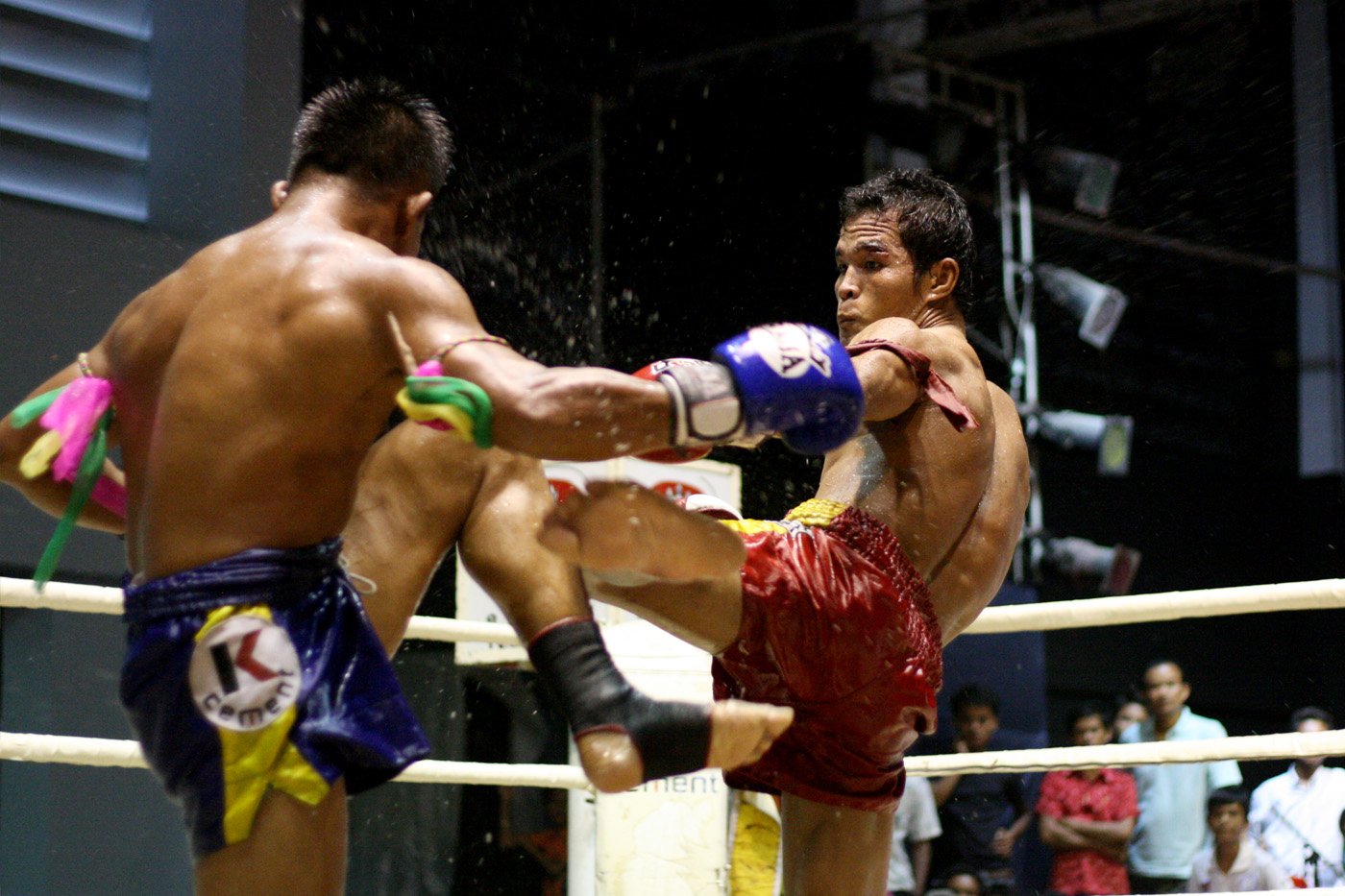
Like other types of martial arts, Kun Khmer is a full-contact combat sport. Kun Khmer focuses on striking and clinch holds, but this sport’s defining feature is its kicking technique. In Kun Khmer, a powerful kick comes from your hip rotation instead of just swinging the leg.
Another name for Kun Khmer is “pradal serey”. Pradal means “fighting” or “boxing”, while “serey” means “free”.
As the national sport of Cambodia, Kun Khmer’s popularity among locals is big. Several organizations host fights and tournaments almost every week, and locals often go to watch. This is no surprise as Cambodians hold Kun Khmer in high regard as a part of their country’s culture and history.
Kuntao
Year created: N/A
Country of origin: Malay Archipelago, Southeast Asia
Creator: N/A
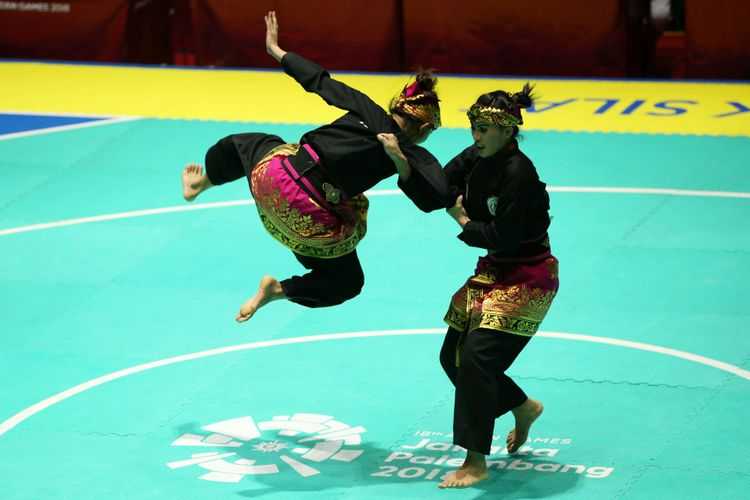
Kuntao differs from other types of martial arts because of its secrecy. Its exact origins are unknown. Back then, people from Southeast Asia practiced Kuntao in secret. Thus, there are no records that can detail its origin.
In the 1900s, Kuntao was developed into a sport. People from Malaysia, Indonesia, and the Philippines began practicing it in the open.
Kuntao martial art focuses on striking, kicking, and grappling. Weapon combat is also a part of Kuntao. Some of these weapons are swords and spears.
Krav Maga
Year created: 1930s
Country of origin: Israel
Creator: Imi Lichtenfeld

Developed for the Israeli military, Krav Maga is a hybrid martial art. It mixes different types of martial arts together such as karate, judo, boxing, and more. Initially, only those from the army knew of Krav Maga. However, Lichtenfeld opened a school for civilians in 1971 after retiring from the army.
Thus, a lot of people learned Krav Maga and spread it around the world. This martial art focuses on striking, take-downs, and chokeholds. It also involves groundwork.
Disarming weapons such as knives and guns are also key lessons in Krav Maga. This makes it a popular choice for self-defense classes.
Lethwei
Year created: 1100s
Country of origin: Myanmar
Creator: N/A

One of the deadliest types of martial arts is Lethwei. This martial art from Myanmar is a full-contact sport. Lethwei doesn’t allow the use of gloves. Instead, people wear tape and gauze. Thus, punching and striking will hurt much more.
Furthermore, Lethwei allows headbutts. Most types of martial arts only allow striking with the fists, feet, or both, but Lethwei allows practitioners to attack with their heads too. This is why some people call the sport, “The Art of 9 Limbs”.
Because Lethwei allows headbutts, fighters are much more prone to injury. In fact, Lethwei is known as the bloodiest martial arts in India. Despite the risks, it is still popular with both fighters and audiences worldwide.
Mani
Year created: 1500s
Country of origin: Cuba
Creator: N/A
Juego de mani, or simply mani, combines martial arts and dance. Developed in Cuba, African slaves disguised combat training with dance moves. This is why one of its names is “baile de mani”. This translates to “dance of war”. On the other hand, “juego de mani” translates to “game of war”.
Another name for this sport is “bambosa”. Initially, mani did not have one-on-one face-offs. Instead, a solo dancer stood in the middle of a circle, who all try to attack them. The solo dancer’s goal is to dodge these attacks.
Later on, mani developed into a competitive nature. Thus, two opponents faced each other. Sometimes, they will use weapons like a staff. Music is important in a match, which determines the rhythm of attacks.
Mixed Martial Arts
Year created: 1900s
Country of origin: N/A
Creator: N/A

Out of all the types of martial arts, mixed martial arts are likely the most televised. In the Ultimate Fighting Champion (UFC), people of all genders and weight classes compete in an octagon cage.
This hybrid sport combines muay Thai, jujutsu, judo, and many more. A lot of technique is necessary to compete in MMA. You will need to be versatile in punching, grappling, and kicking. Learning throws are also important.
Mixed martial artists compete in a fenced ring. They do not use headgear, and they must be barefoot. However, they must wear padded fingerless gloves.
Muay Thai
Year created: 1900s
Country of origin: Thailand
Creator: N//A

“Muay” is Thai for “boxing”. Thus, muay Thai literally means “Thai boxing.” While its origins come from traditional martial arts from the 1300s, modern muay Thai properly emerged in the 1990s.
Muay Thai is called the “Art of 8 limbs.” Unlike other types of martial arts, you can only use your hands and feet. In Muay Thai, you can use elbows and knees to land hits too. Thus, there are eight points of contact.
In muay Thai, there are three classifications: attack, defense, and counter technique. Attacking includes punching, striking, and kicks. Meanwhile, defending refers to blocks and dodges. Lastly, counter techniques are a combo of both.
Ninjutsu
Year created: 1100s
Country of origin: Japan
Creator: N/A

Unlike most types of martial arts, ninjutsu focuses greatly on stealth. The shinobi, or ninjas, were the first to practice ninjutsu. They learned different tactics and strategies to aid them in warfare.
Ninjutsu uses techniques like striking, groundwork, and chokeholds. Striking and grappling are also important. Aside from these, ninjutsu trains your mind through meditation. This helps make your mind sharper and more aware.
Another name for ninjutsu is “ninpo.” Today, ninjas continue to be popular in the media. For instance, the Japanese anime Naruto features stories about ninjas.
Pencak Silat
Year created: N/A
Country of origin: Indonesia
Creator: N/A
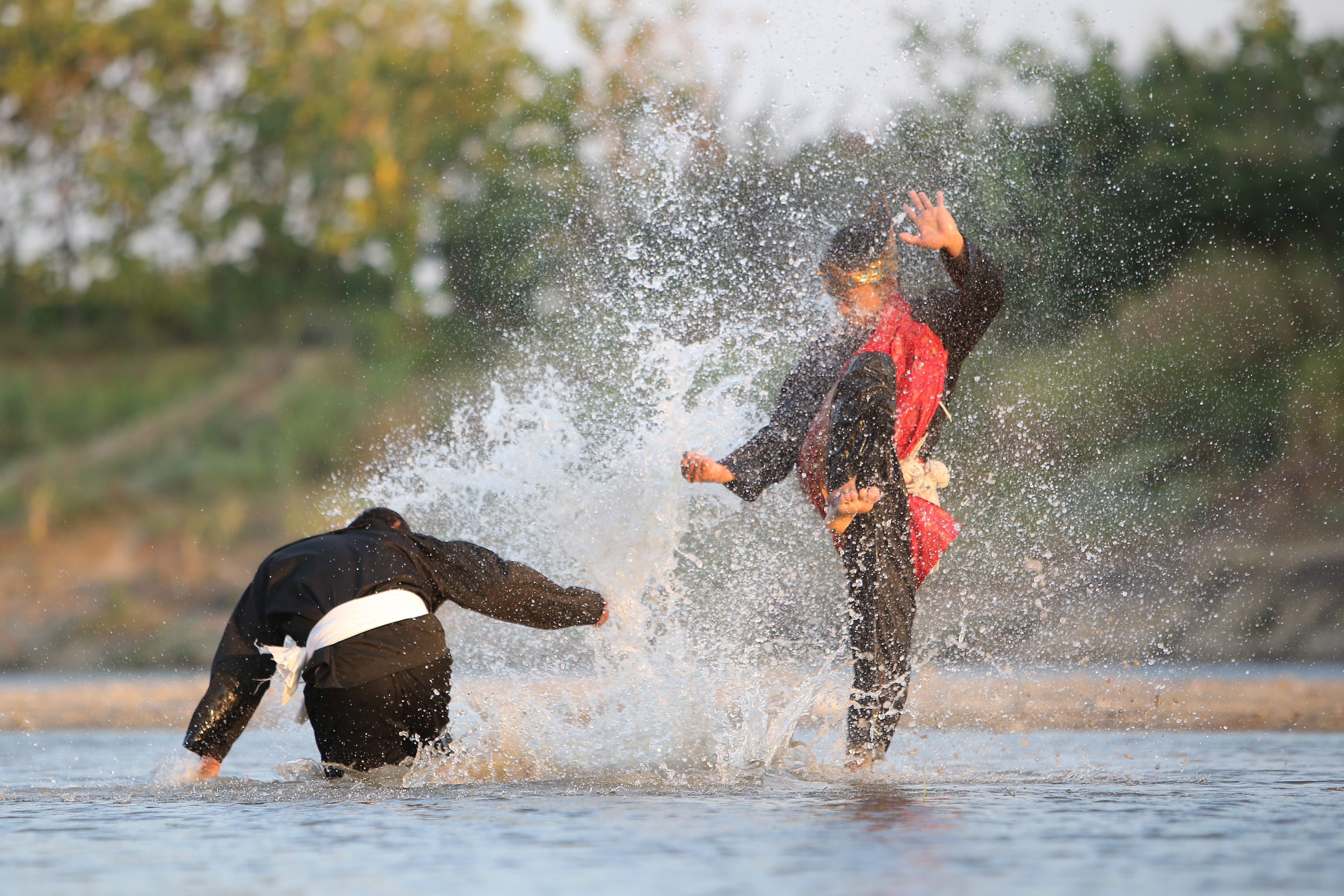
Pencak silat refers to different types of martial arts from Indonesia. This includes armed and unarmed combat.
One example of Indonesian martial art is Silek lanyah. Silek lanyah is the traditional martial arts of the Minang. The Minang is an Indonesian ethnic group. All matches and performances occur in muddy paddy fields.
Historically, pencak silat favored armed combat. There were a lot of different weapons for this martial arts. An example is the kerambit, a small claw-like dagger. People also used rattan staff and sickles in this martial art.
Praying Mantis
Year created: 1200s
Country of origin: China
Creator: Wang Lang
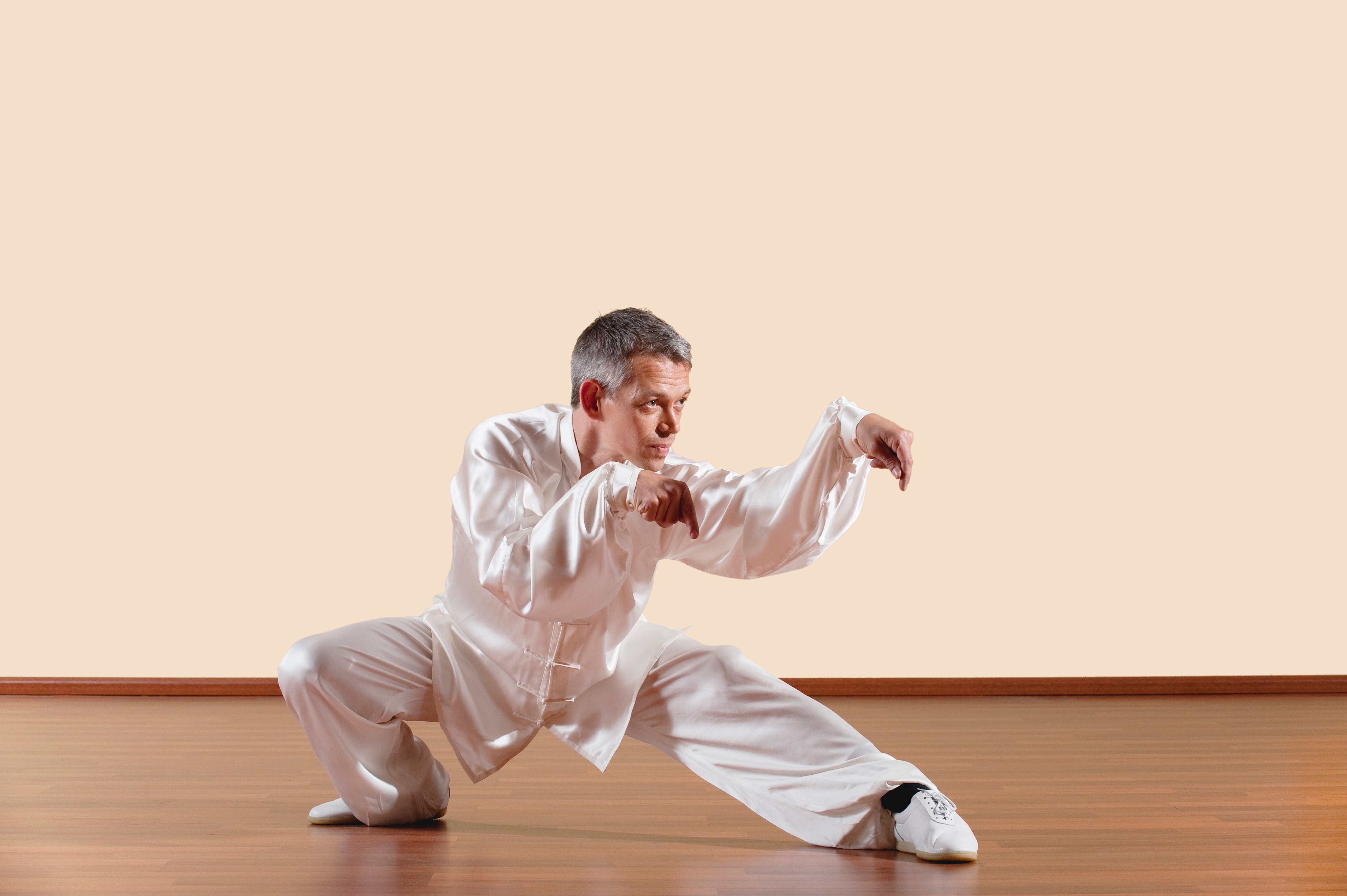
The Northern Praying Mantis is a martial art that mimics a praying mantis’ movements. A praying mantis is a predatory insect and to defend itself, it has to hook or claw in circular motions. The “mantis hook” from this Chinese martial art copies this movement.
This martial art focuses on striking with high speed and strength. The technique of trapping is also a focus in praying mantis.
Other names for this include “Praying Mantis Kung Fu” or “Shandong Praying Mantis.”
Sambo
Year created: 1900s
Country of origin: Russian Soviet Federative Socialist Republic
Creator: Viktor Spiridonov, Vasili Oschepkov, and Anatoly Kharlampiyev

The name “sambo” comes from the Russian phrase, “SAMozaschita Bez Oruzhiya”, which translates to “self-defense without weapons”. Thus, unlike hybrid types of martial arts, sambo is an unarmed sport.
There are two types of sambo. These are sport sambo and combat sambo. Sport sambo is the competitive form, while the combat sambo refers to the military’s style of sambo.
Today, sambo is slowly vying for a slot in the Olympic Games. In the official records of USA Wrestling, the spelling is SOMBO.
Sanda
Year created: 1920s
Country of origin: China
Creator: N/A
Sanda is China’s official full-contact combat sport. Like other hybrid types of martial arts, it draws from traditional and modern fighting styles. Sanda includes kickboxing, wrestling, and muay Thai elements.
Sanda originally started as martial arts for the military. Later on, the Chinese government approved a civilian version. “Wushu Sanda” refers to this version, and it has a standard curriculum that all schools follow. Thus, many civilians learned Sanda as a competitive sport and as self-defense.
Sumo
Year created: 710
Country of origin: Japan
Creator: N/A

Sumo easily stands out from the other types of martial arts. It is a full-contact sport where two wrestlers try to push each other out of a circular ring. Whoever pushes their opponent outside the ring first wins the match.
A “rikishi” refers to a professional sumo wrestler. These wrestlers do not just train. They follow a certain lifestyle. Rikishi must grow their hair long and wear it in a topknot. They must also always wear traditional Japanese clothes. Aside from these, they must also live in a stable where wrestlers train and live together.
Most sumo wrestlers weigh 300 pounds or more. They eat a special type of diet that ensures that they maintain their bulky figures.
Taekwondo
Year created: 1940s
Country of origin: Korea
Creator: N/A

One of the most popular types of martial arts is taekwondo. Taekwondo, sometimes Tae Kwon Do, is a Korean martial art form. People all over the world practice taekwondo. It has been a part of the Olympics since 2000.
“Tae” translates to “foot”. “Kwon” translates to “fist” or “fight”. And “do” means the “way”. These summarize the principles of taekwondo perfectly. Taekwondo focuses on striking and kicking your opponents.
Those who practice taekwondo must wear a dobok, a white uniform, and padded gear to protect their chest and head.
Tai Chi
Year created: 1200s
Country of origin: China
Creator: Zhang San Feng
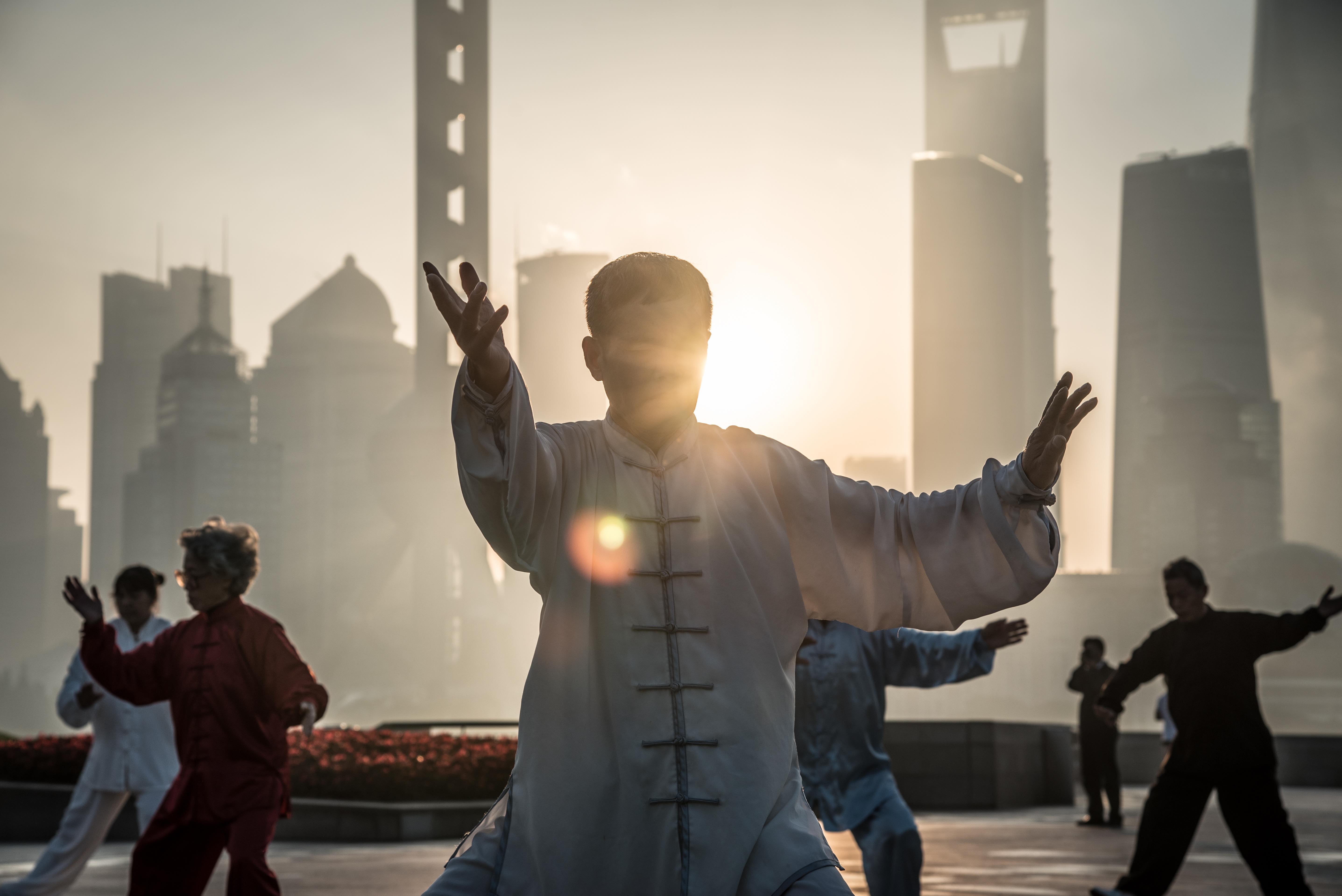
Most types of martial arts need quick reflexes. Tai chi, on the other hand, focuses on slow movements. It is all about taking deep breaths and getting into a meditative state. Because of this, people also call tai chi “shadowboxing.”
The full name of tai chi is “T’ai chi ch’uan”. It draws its discipline from Taoism and Confucianism. The yin and yang, especially, influence tai chi. Meditation, armed combat, and striking techniques are also part of tai chi.
Health professionals often promote tai chi for its benefits. It is perfect for any age or gender as it is a low-impact exercise that relaxes muscles. Apart from that, it can also improve stamina, flexibility, and muscles.
Tang Soo Do
Year created: 1940s
Country of origin: Korea
Creator: Won Kuk Lee and Hwang Kee
Many call Tang Soo Do the “Korean Karate.” Historically, Tang Soo Do draws elements from karate and subak. Subak is an ancient Korean martial art that focuses on bare-hand techniques.
Tang Soo Do focuses on kicking and striking. It also has its own unique forms and stances. These forms are combos of kicking and striking moves.
Actor and producer Chuck Norris is a famous practitioner of Tang Soo Do. Inspired by this fighting style, he also developed his own called the Chuck Norris System.
Yoseikan Budo
Year created: 1931
Country of origin: Japan
Creator: Minoru Mochizuki
Yoseikan budo is a hybrid sport that combines different types of martial arts. It incorporates elements from judo, jujutsu, and pre-war aikido. Like boxing, practitioners also wear padded gloves.
Yoseikan budo roughly translates to “the place where the truth is taught”. This is the primary principle of this martial art. By learning these skills and techniques, the martial artist hopes to learn their “truth”.
Wing Chun
Year created: N/A
Country of origin: China
Creator: N/A
Wing Chun is the traditional kung fu of Southern China. It focuses on self-defense tactics and also grappling and trapping.
The origins of Wing Chun are unknown. However, many believe it came from the legend of Ng Mui. Ng Mui was one of the Five Elders, who are the survivors of the destruction of the Shaolin temple during the reign of the Qing dynasty. Inspired by the movements of a crane and a snake fighting, she invented a fighting style that later evolved into Wing Chun.
One of the most famous grandmasters of Wing Chun is Ip Man. He taught many martial artists who also became grandmasters. One example is the famous Bruce Lee.
What martial arts are in the Olympics?
While there are several types of martial arts, only six are actually included in the Olympics. These are boxing, fencing, judo, karate, taekwondo, and wrestling.
Some form of hand-to-hand combat has always been a part of the international sporting event. The first martial art to become an Olympic sport is wrestling in 708 B.C.E. In 648 B.C.E., boxing becomes the second Olympic martial art.
By 1896, the modern Olympics emerged in Athens. This time, a weapon-based martial art was a part of the line-up. Olympic fencing only allowed men to complete at first, and it wasn’t until 1924 that the Olympics included women’s fencing. To this day, fencing remains the only Olympic martial art that uses weapons.
In 1964, judo debuted at the Olympics, and taekwondo followed in 2000. The last and latest martial art to join the Olympics is karate, which debuted in the line-up at the 2021 Olympic Games in Tokyo.
How many martial arts does Batman know?
If you’re a DC fan, you’re probably curious about Bruce Wayne or Batman’s martial arts abilities. Unlike most superheroes, Batman doesn’t have any supernatural powers so he has to rely on his wits, gadgets, and fighting skills. Thankfully, Batman knows a lot of martial arts. In fact, he knows 127 different types of martial arts!
In his youth, Bruce Wayne trained with many skilled martial artists such as Ra’s al Ghul. He also learns and picks up skills from the opponents he fights against.
Some of the types of martial arts Batman knows are aikido, Krav Maga, boxing, judo, karate, and kung fu. He is also skilled in using weapons because of his Ninjutsu knowledge.
What martial arts does Shang-Chi use?
Of course, Batman isn’t the only superhero who knows martial arts. Marvel’s Shang-Chi is another superhero who is an expert martial artist. Shang-Chi is the titular protagonist of the film Shang-Chi and the Legend of the Ten Rings released in 2021.
Throughout the film, Shang-Chi and other characters showcase six different types of kung fu or Chinese martial arts. These are Shaolin, tai chi, Bajiquan, Wing Chun, Hung Ga, and Baquazhang.
Shang-Chi’s father, Wenwu, uses the stances of Hung Ga. On the other hand, Shang-Chi’s mother, Li, follows the techniques of Baquazhang. These different techniques both influenced Shang-Chi’s own fighting styles all while he learns other disciplines.
During his childhood, Shang-Chi learned various techniques of Shaolin martial arts, including channeling his internal energy or “chi”. He also wears a robe, like the ones Shaolin monks wear.
Aside from hand-to-hand combat, the usage of different Chinese weapons also appears in the film. Shang-Chi and various characters use daggers, bo staffs, hook swords, and many more.
There is no shortage of action films in Hollywood, but many fans love the way Shang-Chi and the Legend of the Ten Rings (2021) showcases Chinese martial arts and culture.
What martial arts does Jackie Chan use?
Fans who adore Shang-Chi and the Legend of the Ten Rings (2021) will no doubt love Jackie Chan’s films too.
With a career that spans six decades, Jackie Chan has starred in over 150 films. He is most known for his action roles, where he showcases his martial arts and gymnastics background. And if you don’t know already, Chan is known for performing his own stunts that are flashy and dangerous, even.
While his style is a mix of different techniques, it doesn’t fall under mixed martial arts. Instead, Jackie Chan’s style mostly draws from Chinese opera. Chinese opera refers to a form of musical theatre that draws from elements of Chinese culture. This includes martial arts, acrobatics, acting, and comedy.
Some might think this is a weaker form of martial arts. However, it requires as much discipline and athleticism as most types of martial arts. Furthermore, Chinese opera itself draws from various martial art techniques. Jackie Chan himself uses styles of kung fu, Wing Chun, karate, judo, taekwondo, and boxing.
Despite his mastery of different Chinese martial arts, Jackie Chan doesn’t actually have a black belt in these styles. He only has one black belt, and this is in the Korean martial art of hapkido. Having only one black belt doesn’t mean Jackie Chan isn’t an expert martial artist. With his renowned skills, he successfully incorporates martial arts with entertainment and flash, resulting in some of the greatest action films that cinema has to offer.
Was this page helpful?
Our commitment to delivering trustworthy and engaging content is at the heart of what we do. Each fact on our site is contributed by real users like you, bringing a wealth of diverse insights and information. To ensure the highest standards of accuracy and reliability, our dedicated editors meticulously review each submission. This process guarantees that the facts we share are not only fascinating but also credible. Trust in our commitment to quality and authenticity as you explore and learn with us.
